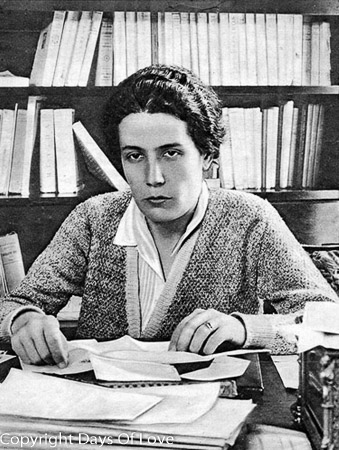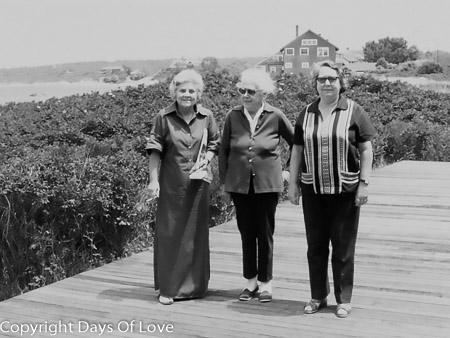BURIED TOGETHER
Partner Louise Crane
Queer Places:
Umpawaug Cemetery, 149 Umpawaug Rd, Redding, CT 06896, Stati Uniti
 Victoria
Kent Siano (March 6, 1891 – September 25, 1987) was a Spanish lawyer and
republican politician. The Second Republic would usher in a period where women
had more rights under the law, and where women were politically empowered for
the first time. Homosexuality was also stripped from the penal code, though
there were still ways for which lesbians could be charged, for example by
being deemed dangerous to the state, or simply being detained by the state
even if their behavior was not criminal. Prominent lesbians of this period
included
Lucía Sánchez
Saornil, América Barroso,
Margarita Xirgu,
Irene Polo,
Carmen de Burgos,
María de Maeztu,
Victoria Kent and
Victoria Ocampo.
Victoria
Kent Siano (March 6, 1891 – September 25, 1987) was a Spanish lawyer and
republican politician. The Second Republic would usher in a period where women
had more rights under the law, and where women were politically empowered for
the first time. Homosexuality was also stripped from the penal code, though
there were still ways for which lesbians could be charged, for example by
being deemed dangerous to the state, or simply being detained by the state
even if their behavior was not criminal. Prominent lesbians of this period
included
Lucía Sánchez
Saornil, América Barroso,
Margarita Xirgu,
Irene Polo,
Carmen de Burgos,
María de Maeztu,
Victoria Kent and
Victoria Ocampo.
Born in Málaga, Spain, Kent was affiliated to the Radical Socialist
Republican Party and came to fame in 1930 for defending – at a court martial –
Álvaro de Albornoz, who would shortly afterwards go on to become minister of
justice and later the future president of the Republican government in exile
(1947 to 1949 and 1949 to 1951). She became a member of the first Parliament
of the Second Spanish Republic in 1931. That same year, the President of the
Republic, Niceto Alcalá-Zamora, appointed her Director General of Prisons, a
post she held until 1934, and she actively continued the reforms in the prison
service that had been started by Concepción Arenal.
Kent was against giving women the right to vote immediately, arguing that,
as Spanish women lacked at that moment social and political education enough
to vote responsibly, they would be very much influenced by the Catholic
priests, damaging left wing parties. She had a controversy about this subject
with another feminist in the parliament, Clara Campoamor. This caused her
certain unpopularity and, when women were given right to vote, she lost her
seat – as she had predicted – to the conservative majority in 1933.

After the Spanish Civil War, Kent went into exile in Mexico, but soon moved
on to the United States. In New York City she published the Ibérica
review from 1954 to 1974,[1]
which featured news for Spaniards exiled in the United States. She died in New
York in 1987, and is buried alongside
Louise Crane at
Umpawaug Cemetery, Redding, Connecticut.
Colleges in Málaga, Fuenlabrada, Marbella, Torrejón de Ardoz (Instituto
de Educación Secundaria Victoria Kent), and a railway station in her home
town of Málaga, have been named after her.
Shortly after her arrival in Madrid, she joined the Asociación Nacional
de Mujeres Españolas y la Juventud Universitaria Femenina (a women's
rights organization), directed by Maria Espinosa de los Monteros. She
represented this entity at a conference in Prague in 1921. After affiliating
the Radical Socialist Republican Party, she was elected as a member of the
Parliament of the Republican-Socialist Conjunction of the Republican Court in
1931. In the election on February 16, 1936, Victoria Kent was elected member
of the Parliament in Jaen, for the Republican Left, which was a part of the
Popular Front. She was also Vice President of the Lyceum Club, since 1926.
One of the most outstanding and controversial moments in Kent's personal
and political life would be her opposition to women's suffrage
[2]before
the Spanish Parliament in 1931, when she faced another feminist, Clara
Campoamor, in a dialectical and significant battle on an issue that would have
a great effect on the rights of women. She declared that Spanish women were
not socially and politically prepared to vote. According to her, Spanish women
were also influenced by the Church and their vote would be conservative and
harmful for the Republic. On the contrary, Clara Campoamor defended that women
had the right to vote as she defended the equality of all human beings. After
her intervention, Victoria lost her popularity and therefore she did not take
part in the Parliament in the 1933 elections. Campoamor finally won the debate
against Victoria Kent in 1933 and this made women able to vote by universal
suffrage. The 1933 elections were won by the right wing as it was united.
Due to the outbreak of the Spanish Civil War , Victoria Kent was forced to
go into exile like many other Republicans. As she was going into exile, she
helped children whose fathers were soldiers to be evacuated. She took refuge
in Paris, and was named First Secretary of the Spanish Embassy in the capital
so that she could continue taking care of refugee children. She was also
responsible for the creation of shelters and nurseries for the same purpose.
She remained in Paris until the end of the Civil War, helping Spanish
exiles in the capital and their departure to America. However, at the
beginning of Second World War as Paris was being occupied on June 14, 1940 by
the Nazi invasion (Wehrmacht), Victoria was forced to take refuge in the
Mexican Embassy for a year. She was judged by Franco's courts and in October
1943, when she was still in Paris, she was sentenced to prison for 30 years,
expelling her from national territory. Fortunately, the Red Cross gave her an
apartment in Boulogne (north of France), where she lived until 1944 protected
by a fake identity. During that time, "Madame Duval" being her false identity,
she wrote Cuatro Años en París, a novel with autobiographical aspects
reflected in the main character, Placido.
She went into exile in Mexico in 1948.[3]
She worked there for two years teaching criminal law at the University. In
1950, she was called by the UN and left Mexico to go to New York, where she
worked for the social defense and led a study based on the poor conditions of
prisons in Latin America. Between 1951 and 1957, she left her previous job and
became minister, without portfolio, of the Second Spanish Republic's
Government from the exile. This made her the second female minister since
Federica Montseny. She also founded the magazine "Iberica," which appealed to
all the exiles that lived far from their homeland, like her. This magazine was
financed by Louise Crane
for twenty years (1954–1974). In 1977, forty years after her exile in France,
Victoria returned to Spain and was welcomed with affection and admiration.
However, she came back to New York where she spent her last days and died on
September 26, 1987. In 1986 she was awarded the medal of San Raimundo de
Peñafor, but because of her old age she was not able to receive it in
person.
My published books:


BACK TO HOME PAGE

 Victoria
Kent Siano (March 6, 1891 – September 25, 1987) was a Spanish lawyer and
republican politician. The Second Republic would usher in a period where women
had more rights under the law, and where women were politically empowered for
the first time. Homosexuality was also stripped from the penal code, though
there were still ways for which lesbians could be charged, for example by
being deemed dangerous to the state, or simply being detained by the state
even if their behavior was not criminal. Prominent lesbians of this period
included
Lucía Sánchez
Saornil, América Barroso,
Margarita Xirgu,
Irene Polo,
Carmen de Burgos,
María de Maeztu,
Victoria Kent and
Victoria Ocampo.
Victoria
Kent Siano (March 6, 1891 – September 25, 1987) was a Spanish lawyer and
republican politician. The Second Republic would usher in a period where women
had more rights under the law, and where women were politically empowered for
the first time. Homosexuality was also stripped from the penal code, though
there were still ways for which lesbians could be charged, for example by
being deemed dangerous to the state, or simply being detained by the state
even if their behavior was not criminal. Prominent lesbians of this period
included
Lucía Sánchez
Saornil, América Barroso,
Margarita Xirgu,
Irene Polo,
Carmen de Burgos,
María de Maeztu,
Victoria Kent and
Victoria Ocampo.

